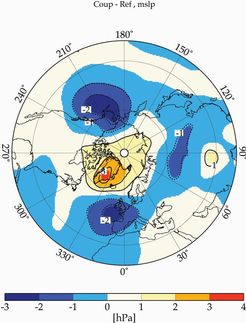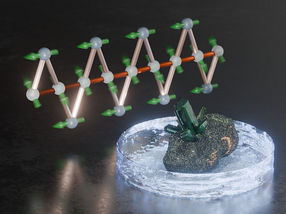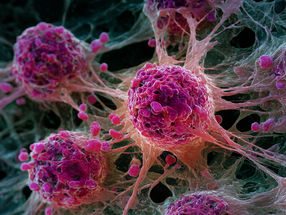Duke innovations improve accuracy of MRI as internal 'thermometer'
Duke University chemists say they have developed a new way to measure temperature changes inside the body with unprecedented precision by correcting a subtle error in the original theory underlying magnetic resonance imaging (MRI).
"We can get five to 10 times better accuracy in temperature maps than is possible with the best possible conventional methods," said Warren Warren, a Duke chemistry professor who is corresponding author of a new report appearing in Science. The new technique "is suitable for imaging temperature in a wide range of environments," added the report.
MRI scans can also be used to estimate interior temperature changes in procedures like hyperthermia cancer therapy, where focused heat is used to kill internal tumors. This is because the hydrogen atoms in water shift their MRI broadcasting frequencies in a predictable way as water temperatures change. And water is a major component of molecules in bodily tissues.
Though precise in evaluating water temperature changes in isolation, conventional MRI works imperfectly as an internal thermometer within actual patients. That's because the magnetic field's interactions with hydrogen atoms vary widely within patients' bodies, and those interactions also shift from minute to minute, Warren said.
"Current methods break down in the very systems that are of greatest interest, those that are inhomogeneous and that change with time," the report said. "As a result, they only provide relative temperature maps," Warren added. "So we're developing methods to do MRI differently."
The Duke group's approach involves selective detection of what are called "intermolecular multiple quantum coherences (iMQCs)" in hydrogen atoms. Warren said the use of iMQCs is an application of his lab's 1998 correction of an early "subtle mistake" in the way MRI's inventors exploited quantum mechanical theory
While MRI theory sees nuclei of hydrogen as miniscule bar magnets spinning in characteristic ways within magnetic fields, it originally ignored certain interactions between those spins, Warren said. "We had to completely rewrite the theory of magnetic resonance to figure out where the mistake was made," he added.
By incorporating these missing interactions, the Duke chemists refinied both the electronics and interpretation of data from MRI scans to improve heat measurements. The Duke method exploits three sets of facts: First, water and fat never mix. Secondly, hydrogen atoms in water respond to heat changes but those in fat don't. Thirdly, water and fat molecules in the body are likely to be positioned within tens of millionths of a meter (or microns) of each other.
Fat and water molecules occurring so close together are subjected to the same magnetic conditions, the Duke chemists reasoned. So the differences between the two types of MRI signals they emit should represent the effect of temperature changes on the hydrogen in water. Calculating the effects of iMQCs - the subtle interactions between atomic spins - further improves the accuracy of the comparison.
"So the difference between water and fat is an absolute magnetic resonance thermometer," Warren said.
Topics
Organizations
Other news from the department science

Get the chemical industry in your inbox
By submitting this form you agree that LUMITOS AG will send you the newsletter(s) selected above by email. Your data will not be passed on to third parties. Your data will be stored and processed in accordance with our data protection regulations. LUMITOS may contact you by email for the purpose of advertising or market and opinion surveys. You can revoke your consent at any time without giving reasons to LUMITOS AG, Ernst-Augustin-Str. 2, 12489 Berlin, Germany or by e-mail at revoke@lumitos.com with effect for the future. In addition, each email contains a link to unsubscribe from the corresponding newsletter.




























































